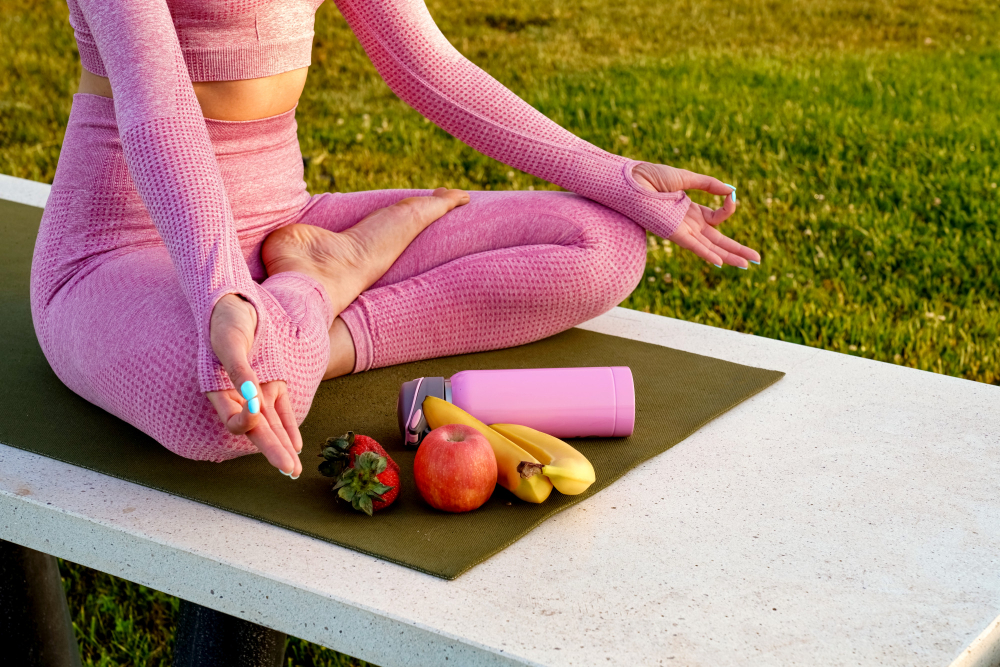Understanding Chronic Fatigue
Chronic fatigue is a lasting feeling of tiredness that does not go away with rest. Many people feel weak, have trouble focusing, or find daily tasks hard. For some, even simple chores can feel overwhelming. Often, chronic fatigue affects work, family life, and mood. Although the exact cause is not always clear, stress, poor sleep, and some health problems can play a role. If you feel tired for more than six months, you may have chronic fatigue. It is important to seek help and find ways to manage your energy.
How Yoga and Naturopathy Support Energy and Wellness
Yoga for chronic fatigue is a gentle way to boost energy and relax the mind. In fact, yoga combines movement, breathing, and rest. This helps the body feel refreshed. Many studies show that yoga can lower stress and improve sleep. As a result, people with chronic fatigue often feel more alert and calm. Naturopathy also supports wellness by using natural remedies, healthy food, and simple lifestyle changes. Together, yoga and naturopathy offer a safe, natural way to manage fatigue and improve well-being.
Energy-Boosting Yoga Poses for Chronic Fatigue
Below are seven yoga poses that can help boost energy. Each pose is gentle and safe for most people. However, always listen to your body and move slowly. If you feel pain, stop and rest.
1. Child’s Pose (Balasana)
Kneel on the floor with your big toes touching.Sit back on your heels and stretch your arms forward.Rest your forehead on the mat and breathe deeply.Hold for 30 seconds to 1 minute.
Tip: Place a pillow under your chest for extra comfort. This pose calms the mind and eases tension.
2. Cat-Cow Pose (Marjaryasana-Bitilasana)
Start on your hands and knees.Inhale, arch your back and lift your head (Cow Pose).Exhale, round your back and tuck your chin (Cat Pose).Repeat for 1–2 minutes, moving with your breath.
Tip: Move slowly and keep your neck relaxed. This pose wakes up the spine and boosts energy.
3. Legs-Up-the-Wall Pose (Viparita Karani)
Sit close to a wall and lie on your back.Lift your legs up and rest them against the wall.Keep your arms at your sides and relax.Stay for 5–10 minutes, breathing gently.
Tip: Place a folded blanket under your hips for support. This pose helps blood flow and soothes tired legs.
4. Cobra Pose (Bhujangasana)
Lie on your stomach with your hands under your shoulders.Press your hands down and lift your chest gently.Keep your elbows close to your body.Hold for 15–30 seconds, then lower down.
Tip: Do not over-arch your back. This pose opens the chest and helps you breathe better.
5. Mountain Pose (Tadasana)
Stand tall with your feet together.Spread your toes and press your feet into the floor.Reach your arms overhead or keep them at your sides.Breathe deeply and hold for 1 minute.
Tip: Focus on your breath and posture. This pose builds strength and balance.
6. Bridge Pose (Setu Bandhasana)
Lie on your back with your knees bent and feet flat.Press your feet down and lift your hips up.Keep your arms at your sides or clasp your hands under your back.Hold for 30 seconds, then lower down slowly.
Tip: Place a pillow under your lower back for support. This pose boosts blood flow and energy.
7. Seated Forward Bend (Paschimottanasana)
Sit with your legs straight in front of you.Inhale, then reach forward and hold your feet or shins.Keep your back long and relax your neck.Hold for 30 seconds to 1 minute.
Tip: Bend your knees if needed. This pose calms the mind and stretches the back.
Nutrition and Lifestyle Tips from Naturopathy
Along with yoga, healthy eating and simple habits can help manage chronic fatigue. Naturopathy suggests the following tips:Eat fresh fruits and vegetables every day.Drink plenty of water to stay hydrated.Choose whole grains and lean proteins for steady energy.Avoid too much sugar, caffeine, and processed foods.Get enough sleep each night.Take short breaks during the day to rest.Spend time outdoors for fresh air and sunlight.
These habits support your body and mind. They work well with yoga for chronic fatigue.
Prevention and Self-Care Strategies
Managing chronic fatigue takes time and care. However, small steps can make a big difference. Try these self-care ideas:Set a regular sleep schedule.Practice deep breathing or meditation daily.Keep a journal to track your energy and mood.Ask for help from friends or family when needed.Limit screen time, especially before bed.
Remember, gentle movement and rest are both important. Over time, these habits can help prevent fatigue from getting worse.
When to Consult a Healthcare Professional
Although yoga and natural remedies can help, it is important to talk to a doctor if:Your fatigue lasts more than six months.You have pain, fever, or weight loss.Your symptoms get worse or affect daily life.
Sometimes, chronic fatigue can be a sign of another health problem. A healthcare specialist can help find the cause and suggest the best treatment.
Conclusion
In summary, yoga for chronic fatigue offers gentle ways to boost energy and well-being. By adding healthy food and simple habits, you can support your body and mind. However, always consult a healthcare specialist before starting any new exercise routine for chronic fatigue.



